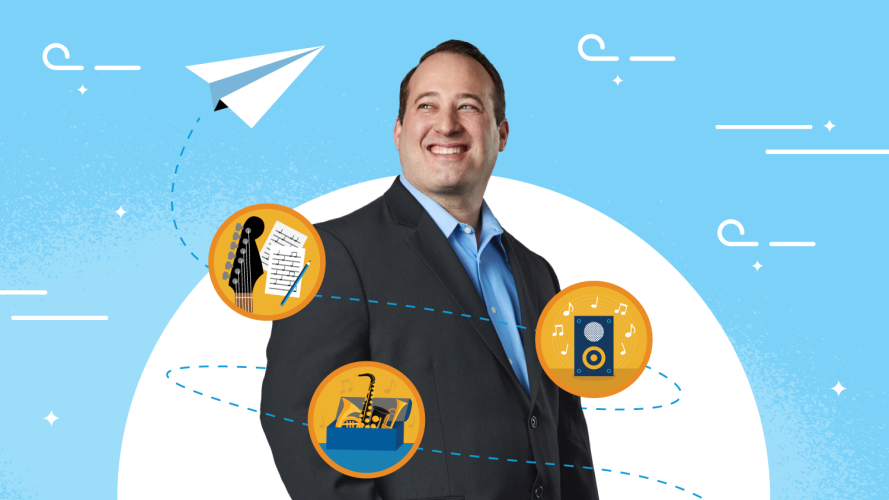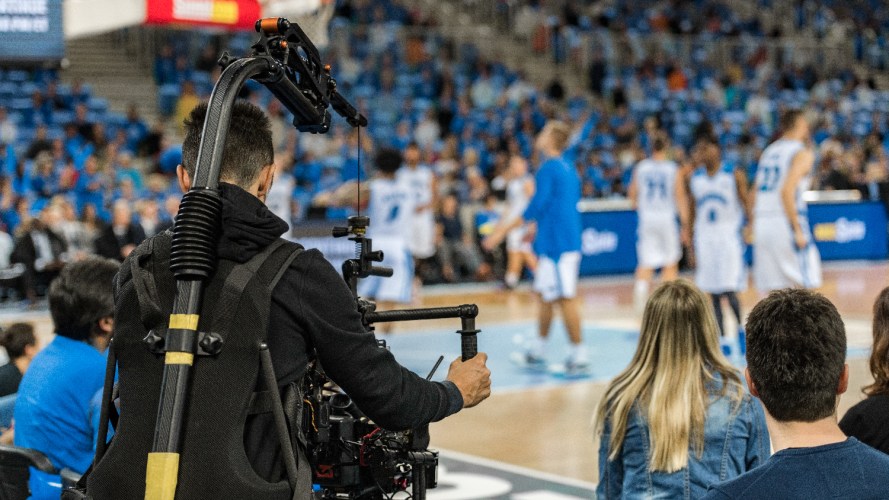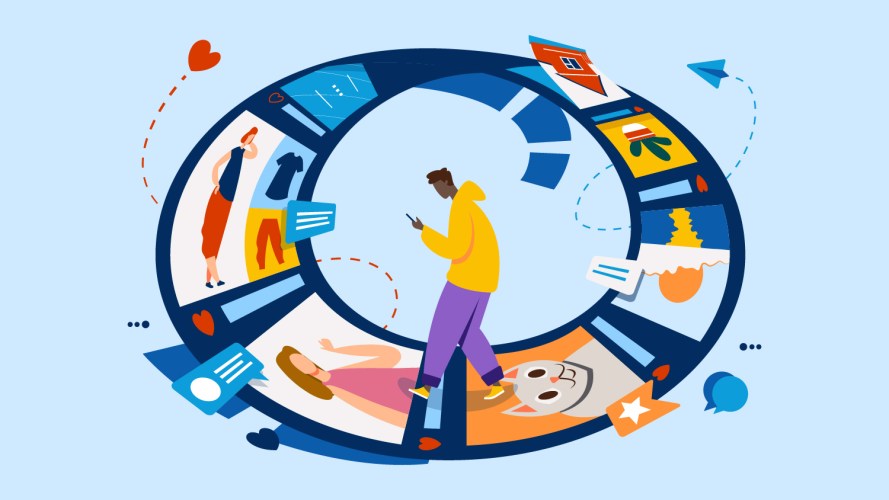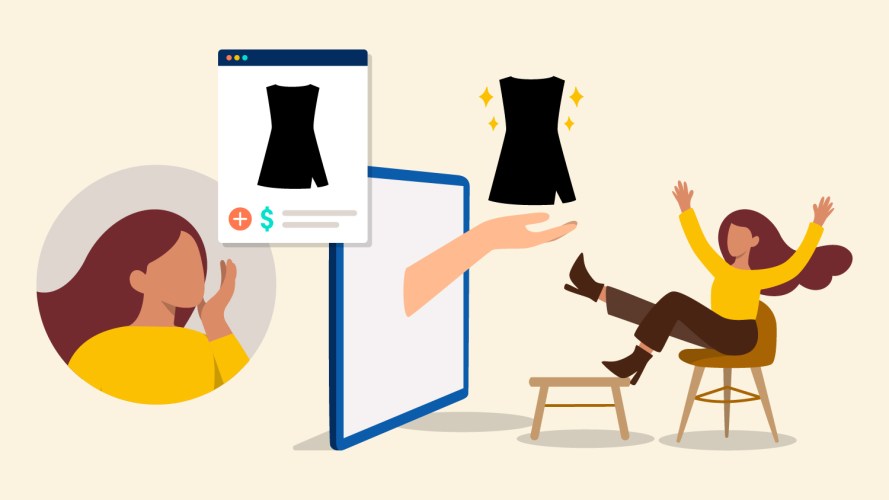Turn Your Biggest Fans Into Sales Machines: A Guide to Referral Marketing



Want customers to spread the word about your products? Here are 5 ways to unlock the power of referral marketing.

Sara Fefferman
In a time where consumers have as many options as they do today, sifting through the endless research can feel daunting. It’s why many of us turn to reviews and recommendations from friends, relatives, and influencers. Marketers can plug into this by rewarding customers who share their positive experiences with the world. This is called referral marketing.
Think about the last decision you made about a product or service. Did you look for recommendations before purchasing? You’ve probably turned to your network at some point during a decision-making process, for both personal and business matters. We all tend to value and trust recommendations from people we know.
Brands are increasingly tapping into the power of referral marketing, and customers like the rewards they get from being a brand advocate.
Turn brand advocates into sellers
Learn how you can quickly launch referral marketing promotions across the full customer journey.



According to our State of Connected Customer report, consumers are willing to give more of their own data if they get something out of it. One in three shoppers say they’re willing to share a brand on social media in exchange for rewards. Social media has become the first stop in product research. As we found in our Connected Shopper Report, 50% of customers today have found new brands from searching their social media for recommendations.
If you’re looking for a refresher or just want some tips to improve your strategy, we’ll guide you through it all.
What is referral marketing and how does it work?
Referral marketing is when brands identify and engage with their top brand advocates, incentivizing them to recommend the brand to their network. Both the referrer (the advocate) and the new customer get rewarded if the promotion actions happen.
Referral marketing isn’t a new concept. Chances are you’ve come across referral marketing promotions for years. Have you ever received an email from your credit card company asking you to invite your friends and then you both receive extra points? Or have you bought a product that an influencer you follow on your Instagram has recommended?
Referral marketing is a low-cost customer acquisition strategy because it empowers your top brand advocates to become your top sales associates. Back in the day, customers would write who referred them on a form in a brick and mortar store. Today, referrals are done with unique URLs that track engagement. Companies track the URL so you both receive a promotion on your next purchase or another reward.
And how is this done? With connected data, of course. As your tech stack evolves with data and AI capabilities, make sure your referral marketing strategy is doing so as well. Here are five must-haves as you build out your marketing plans.
1. You need to connect referral marketing to your CRM data
Referral marketing relies on having a connected data strategy that gives you a complete view of your customers. Customer relationship management (CRM) data is key to creating targeted referral promotions.
You need to know each advocate’s history with your brand before reaching out to them. Think about it: if someone has an issue with your product and is working with your customer support with an open service ticket, that’s valuable information to consider before asking them for a brand recommendation.
Connecting referral marketing with your CRM will help you deliver personalized and predictive referral programs. Plus, that connected program will bring valuable zero- and first-party data back into your CRM from customers sharing with you directly.
2. Identify the right brand advocates for your goals
Your referral programs need to reach the right audience to have the best results. You don’t want to waste your efforts and money reaching out to customers who won’t spread the word.
You already have the information within your platform that could help indicate who might be an advocate based on actions such as purchase history, loyalty information, marketing and sales interactions. Find opportunities to activate this data in your referral strategy.
As you set up your referral programs, look for software that uses AI to surface insights and helps you make sense of your data to help you build strategic targeting parameters. This will set up your programs with the best chance for results.
3. Extend referral programs to the entire marketing lifecycle
Think of your referral marketing as an entry point for a larger campaign, and ensure a connected experience for the customers you’re trying to engage. Also, make sure your website gives your advocates additional opportunities to convert their networks by creating a consistent experience across all interactions.
It’s fairly simple and effective to do this with Salesforce technology. You can reach out to advocates on their preferred channels by connecting email journeys via Marketing Cloud and e-commerce widgets via Commerce Cloud. This will allow you to weave referral marketing efforts into your marketing journeys, helping you connect based on your customers’ unique behavior.
What’s on your customers’ minds?
We surveyed over 14,000 consumers and business buyers on trends that are shaping the future of marketing.



4. Test, learn, and optimize based on performance
Clear metrics and key performance indicators (KPIs) are vital to any referral marketing strategy, so make sure you set up your program in a way that you can evaluate quickly as you go. Use predictive data to surface insights you might not be able to make on your own and be proactive where you can be to maximize performance.
There are lots of options you can tweak to find out what works for your brand. Maybe it’s the email copy, the images, or the actual promotion you are pushing. For example, if you decide to run a program dedicated to a specific location but aren’t seeing the lift you initially planned for, your participation and conversion rate metrics will help you broaden your filters for a larger reach.
Or, maybe you want to see what’s actually resonating with your advocates and new customers, so you test a few different offers. Create a program that lets you quickly evaluate results and then pivot toward the one making the best impact.
5. Expand your referral marketing to a loyalty strategy
End-to-end loyalty programs that have different tiering and reward structures can be overwhelming. Referral marketing is an easier way to get started. As you build out your referral program, think about short and long term goals, and plan how you can bake referral marketing into a larger loyalty strategy over time. (For example, you could offer different promotions based on loyalty status.)
This unlocks opportunities for additional creativity, all anchored back to what your business goals are and what motivates your customers.
The cool thing about referral marketing is there is no right or wrong way to do it – look at it as an opportunity to interact and incentivize your advocates. As we enter a new era of data, AI, and engagement, marketers can make an impact by being creative and making data-driven decisions. Your customers, both old and new, will reward you for it.



























